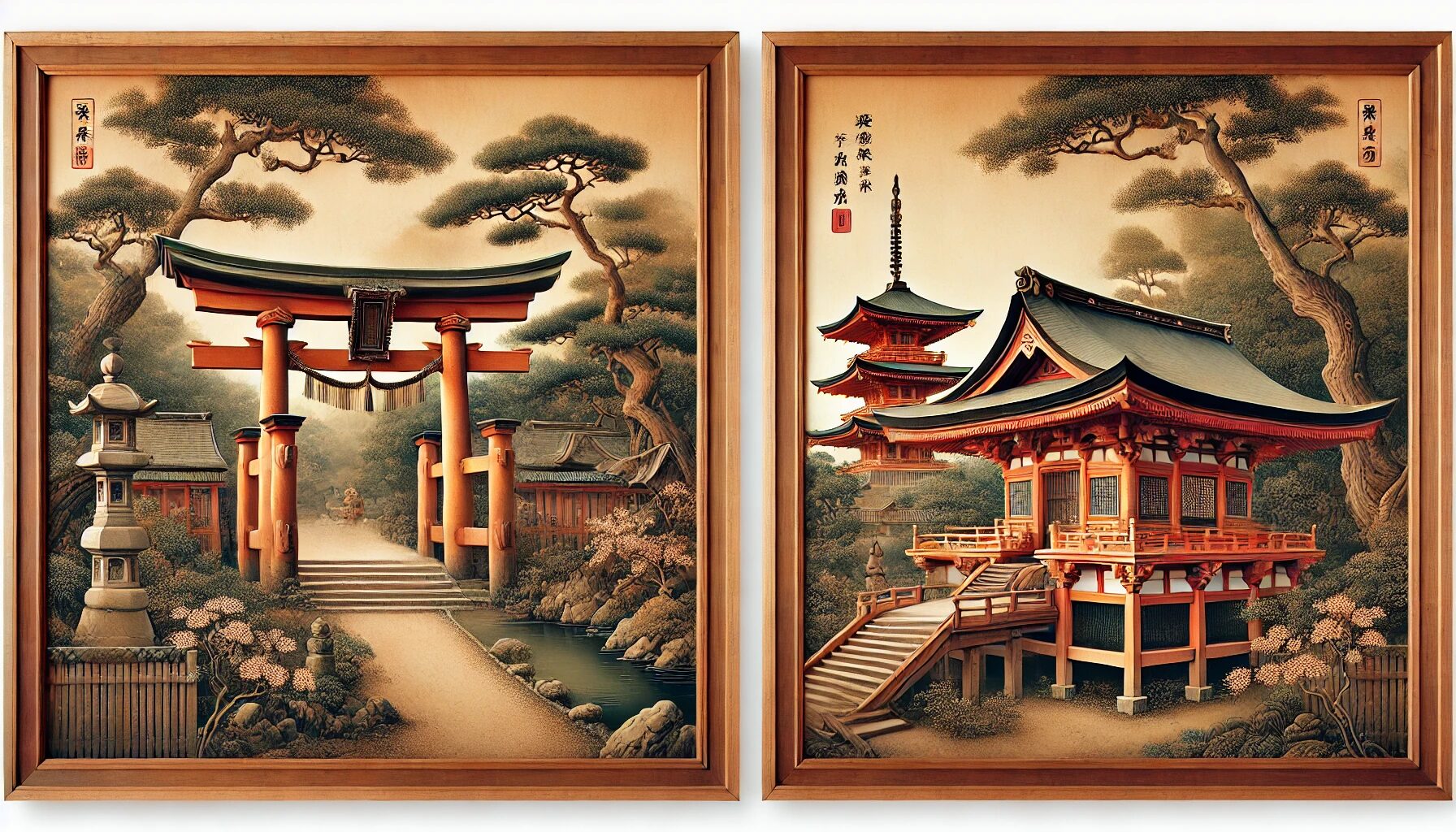If you’ve ever traveled to Japan, you’ve likely come across beautiful wooden structures surrounded by nature, some with large red gates and others with tall pagodas. These are Shinto shrines and Buddhist temples, two of the most important religious sites in Japan. But what’s the difference?Knowing how they differ helps you appreciate Japanese culture on a deeper level and makes your visits more meaningful.
Religious Foundations: Shintoism vs. Buddhism
Shinto Shrines: The World of Kami
Shrines are dedicated to Shintoism, Japan’s native religion, which has been practiced for over 2,000 years. Shintoism revolves around kami, which are spirits or gods found in nature, objects, and even ancestors. Unlike many other religions, Shinto has no single founder, no holy book, and no strict doctrines.
One of the core aspects of Shinto is purification. Since kami are believed to reside in pure places, visitors cleanse themselves before approaching the shrine.
Buddhist Temples: The Path to Enlightenment
Buddhism, on the other hand, came to Japan from India via China and Korea around the 6th century. Its teachings are based on Siddhartha Gautama (Buddha) and focus on concepts like karma, rebirth, and achieving enlightenment. Temples serve as places of worship, meditation, and learning for Buddhist monks and followers.
While Shintoism celebrates life and nature, Buddhism often focuses on the afterlife and spiritual growth. That’s why you’ll find graveyards in temples but not in shrines.
Architectural Distinctions
If you’re unsure whether a site is a shrine or a temple, just look at the architecture!
Key Features of Shrines
• Torii Gates – The iconic red gates that mark the entrance to a shrine. Passing through a torii symbolizes stepping into a sacred space.
• Purification Troughs (Chōzuya) – A water basin where visitors wash their hands and rinse their mouths before praying.
• Main Hall (Honden) – The most sacred area where the kami is enshrined. Visitors do not enter this space.
Key Features of Temples
• Main Hall (Hondō or Butsuden) – This is where Buddhist statues and relics are housed.
• Pagodas – Tall, multi-tiered towers often containing sacred Buddhist texts or relics.
• Cemetery Grounds – Many temples have graveyards, as Buddhism plays a major role in funerals and memorial services.
Worship Practices and Rituals
How to Pray at a Shrine
1. Purify yourself at the water basin (chōzuya).
2. Approach the offering box and throw in a coin (typically 5 yen for good luck).
3. Bow twice, clap twice, and then bow once more while offering your prayer.
The clapping is unique to Shinto shrines—it is believed to attract the attention of the kami.
How to Pray at a Temple
1. Remove your shoes if entering the main hall.
2. Place your coin in the offering box, but do not clap.
3. Press your hands together in prayer and bow slightly.
4. Many people light incense and bow before a Buddhist statue.
Unlike at shrines, clapping is not practiced at temples.
Purpose and Significance
Shrines: Celebrating Life and Community
Shrines are closely tied to seasonal festivals, weddings, and life celebrations. Many Japanese people visit shrines for New Year’s blessings (Hatsumōde) or to pray for good health, success, and protection.
Temples: Reflection and Spiritual Growth
Temples are often associated with meditation, funerals, and spiritual reflection. Many Japanese people visit temples for Obon (a festival honoring ancestors) and to seek inner peace through Buddhist teachings.
Conclusion: Appreciating Japan’s Spiritual Heritage
Both shrines and temples play an essential role in Japanese culture. While they serve different religious purposes, they often coexist peacefully—in fact, many Japanese people follow both Shinto and Buddhist traditions!
So next time you visit Japan, take a closer look at the architecture, customs, and rituals. Understanding the difference between shrines and temples will make your journey even more enriching!



コメント